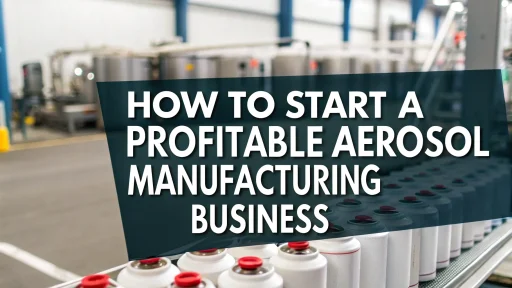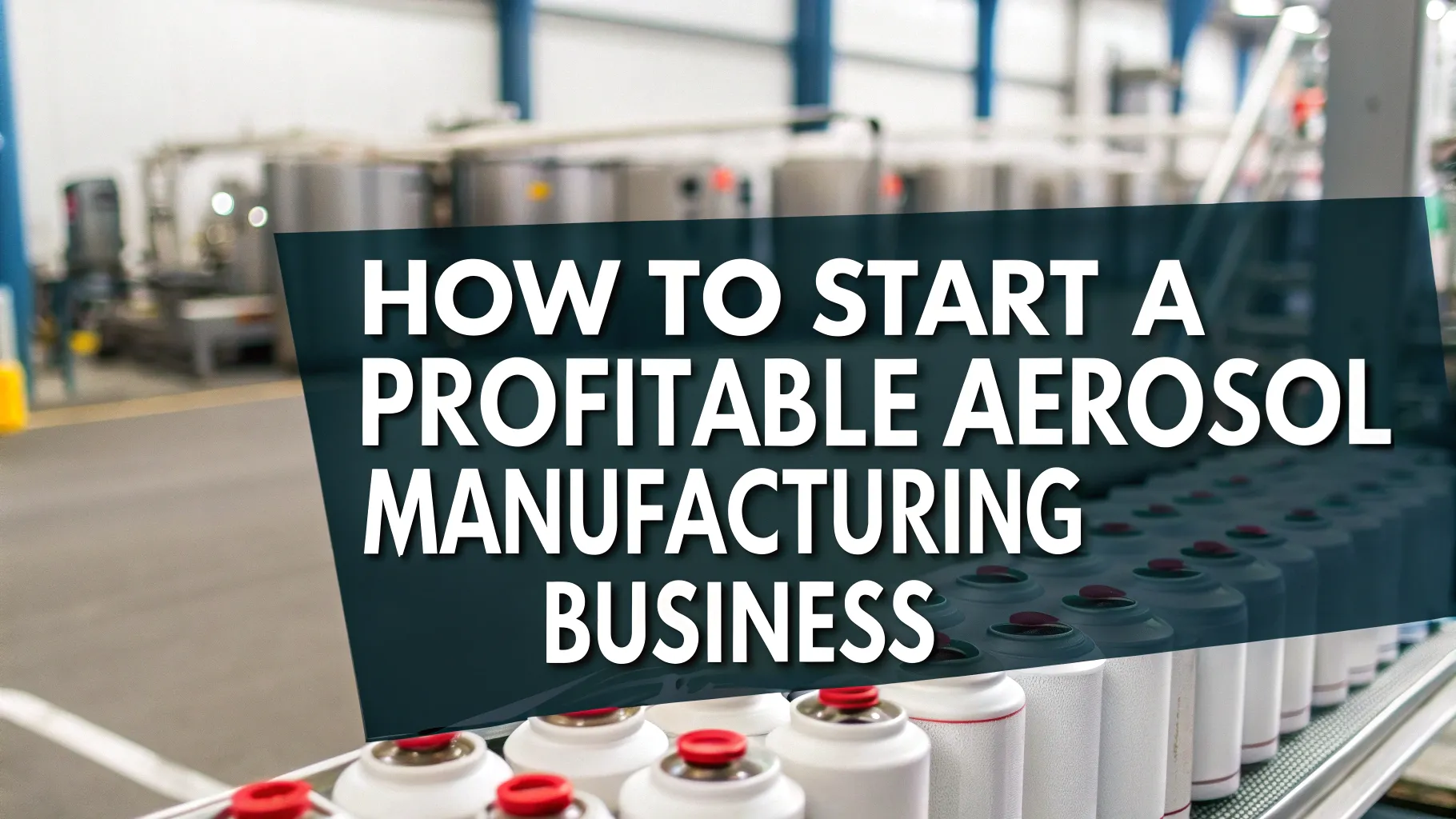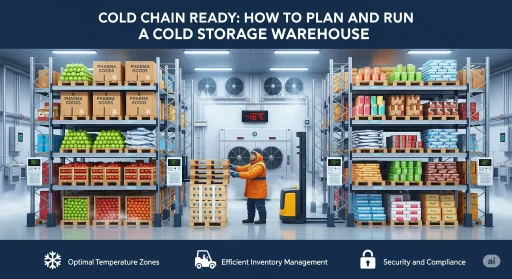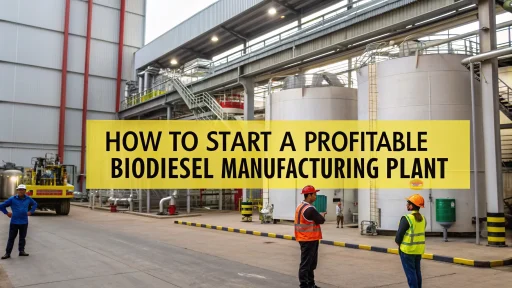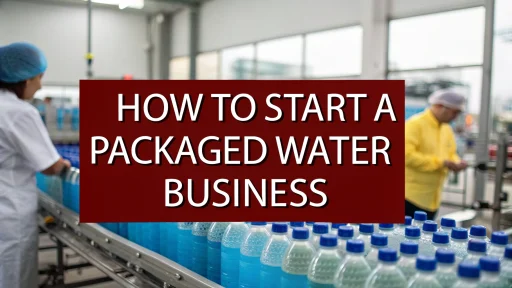The following is a brief introduction to the topic:
Aerosols can be found in a wide variety of products, from perfumes and deodorants, to paints, lubricants, and insect repellents. Aerosol manufacturing business offers a convenient and precise packaging and delivery system that has revolutionized multiple industries. Aerosol manufacturing business is a lucrative business opportunity for entrepreneurs and startups. It’s driven by global consumer demands, industrial applications, and innovations in eco-friendly propellants.
Aerosols have expanded in recent years beyond household and cosmetic products to include medical, automotive, and agricultural applications. Due to this diversification and the growth of ecommerce and retail penetration, entrepreneurs have access now to an industry that is rapidly growing and versatile, with high margins, and has export potential.
This guide will examine the market landscape, the growth drivers, the manufacturing processes, and the step-by-step approach for setting up a profitable aerosol production unit in India, blending global insight with India-specific opportunity.
View our handbooks for more information
Aerosols Market in India and Global Overview
Aerosols are undergoing a major transformation. The industry is focusing on safety for consumers, sustainability and multi-sector growth.
- Global Market Size (Estimated at USD 85,3 billion by 2024).
- Forecast (2024-2029). Expected to grow at a CAGR of 5.2%, reaching USD 110 billion in 2029.
- Key Growth Regions: North America, Europe, and Asia-Pacific. India and China are the leading emerging markets.
- India’s Aerosol market is estimated to reach USD 1.2 billion by 2024 and grow at a 6.5% CAGR until 2029.
Table: Global and Indian Aerosol Market forecast (2024-2029).
| Year | Global Market Size in USD Billion | CAGR % | Indian Market Size in USD Billion | CAGR % |
| 2024 | 85.3 | – | 1.20 | – |
| 2025 | 89.7 | 5.1 | 1.28 | 6.5 |
| 2026 | 94.4 | 5.2 | 1.37 | 6.5 |
| 2027 | 99.4 | 5.3 | 1.46 | 6.5 |
| 2028 | 104.7 | 5.3 | 1.56 | 6.5 |
| 2029 | 110.0 | 5.2 | 1.66 | 6.5 |

Sector Opportunities and Key Drivers of Demand
Aerosols are versatile. These are the key sectors driving growth.
1. Personal Care and Cosmetics: Hair sprays (deodorants), shaving foams (shaving foams), perfumes. Demand is driven by the rising middle-class incomes in India and Asia-Pacific.
2. Household Products: Air fresheners and cleaning agents. Insecticides. This segment has been boosted by the increased awareness of hygiene post-pandemic.
3. Healthcare & Pharmaceuticals – Inhalers and topical medications. The growing healthcare infrastructure in India provides scope for medical grade aerosol products.
4. Automotive & Industrial Lubricants – Spray paints and lubricants. Industrial adoption is increasing in this segment.
5. Aerosol pesticides, plant nutrients and plant nutrition sprays are new niches in agriculture.
The global sustainability trend is pushing manufacturers to use eco-friendly propellants like compressed air, CO2, nitrogen, and CO2 in place of hydrocarbons. This opens up R&D opportunities for entrants.
Related article: How to Start a Profitable Aerosol Manufacturing Business
Manufacturing Process Overview
Aerosol production follows a technology-driven, structured process to ensure quality and safety.
1. Conducting a Comprehensive Market Study
Understanding market potential is the most important step before investing in manufacturing equipment. Entrepreneurs need to study the demand trends for different segments, such as personal care products, automotive aerosols, household products, and industrial aerosols.
The research should also include key demographics of consumers, new preferences, such as eco-friendly propellants, and seasonal variations in demand. Analyzing competitors, both domestically and internationally, is also important to identify trends in pricing, unique selling propositions, and product gaps. A comprehensive market survey can not only provide insight into the sales potential, but also help shape product positioning and brand from the beginning.
2. Selecting the Right Product Lines and Specialization
After the market analysis, it’s important to create a product portfolio. Aerosols are available in many different categories, including deodorants and air fresheners. They can also be used for spray paints, lubricants, or insect repellents. In order to maintain a high level of quality and build a strong brand, it is often better for new businesses to specialize in a few segments. The product line you choose will also influence the machinery, propellants, and raw materials required.
3. Securing regulatory approvals and compliance
Aerosol manufacturers are subject to strict regulations governing safety, quality, and the environment. Businesses are required to obtain licenses to handle pressurized containers or flammable substances. It is important to comply with the packaging safety standards as well as environmental rules relating to propellant gas. Entrepreneurs in India need to communicate with agencies like the Bureau of Indian Standards for quality certification, the Pollution Control Board (PCB) for environmental clearance and the Chief Controller of Explosives for handling flammable material. In India, ensuring compliance early on prevents future operational disruptions and builds customer trust.
4. Plan the Manufacturing Facility and Infrastructure
It is important to consider the layout of the factory for worker safety and operational efficiency. The ideal aerosol production facility would have separate areas for storing raw materials, formulating, filling, sealing and packaging. Safety compliance requires adequate ventilation, fire safety system, and explosion-proof electric fittings.
Location should be convenient for raw materials and well-connected with distribution channels. The infrastructure should also be scalable, allowing the plant to handle future production increases without major structural changes.
5. Equipment and Machinery for Sale
The type of product and production capacity will determine the choice of machine. The typical aerosol production lines include filling machines and crimping devices, as well as propellant injection systems and labeling units. Semi-automatic and fully automated machines are recommended for high-volume operations to reduce errors.
Equipment should come from suppliers who offer after-sales service, since downtime caused by technical problems can disrupt production schedules.
Related articles: How to Start an Aerosil Manufacturing Business
6. Source Raw Materials and Components
The raw materials used in aerosol production include formulation ingredients (such a active chemicals, fragrances or lubricants), propulsion (like CO2, LPG or nitrogen) and packaging components (metal cans and valves). Long-term agreements with suppliers ensure cost stability and consistency.
A secondary supplier of critical inputs is also recommended to avoid production stops due to disruptions in the supply chain. At this stage, quality control is crucial — impurities can impact product performance and safety.
7. Set up the production process
Aerosol production involves a number of steps, including preparing the formulation, filling cans with product, injecting propellants, crimping valves, and packaging. To ensure safety and quality, each stage must adhere to strict protocols. Propeller injection, for example, must be performed in areas equipped with explosion-proof machinery.
Cleanrooms are essential for products that require a high level of quality, such as pharmaceuticals and cosmetics. Before products can move on to the next step, it is important to conduct in-process inspections. This includes checking for fill weights and valve functionality.
8. Quality Assurance and Testing
This program will ensure that every batch is up to regulatory standards and meets customer expectations. Laboratory testing is required to determine pressure stability, leak detection and spray consistency. For future reference, retention samples should be kept and all test results should be documented. Quality control is a continuous process, not an event. It’s what defines the brand’s reputation on the market.
9. Packaging and Branding Strategy
Packaging plays an important role in attracting and protecting customers. Aerosols are heavily reliant on their visual appeal. Labeling regulations should be followed, such as hazard warnings and usage instructions. Displays with eye-catching graphics, color combinations that are unique, and ergonomic designs will increase shelf visibility. Businesses should adjust packaging for export markets to meet the legal, language, and design requirements of the destination country.
10. Building a Distribution and Sales Network
Aerosol manufacturers must not only produce aerosols, but also reach the right clients efficiently. Entrepreneurs have a variety of sales channels to choose from, including wholesalers, retailers, ecommerce platforms, and direct B2B partnerships with industries. Strong distribution networks ensure steady sales and increase cash flow. Exports benefit from partnering with international distributors. Attending trade shows and establishing a relationship with them can also help to build your brand’s recognition overseas.
11. Innovation and sustainability initiatives that are continuous
Aerosols are moving towards eco-friendly formulations, recyclable packaging and biodegradable propellants. Market leaders are those who invest in research and develop to adapt these trends early. The feedback from customers should be used to improve formulations, spray performance and introduce new variations. Sustainability is not just a requirement for compliance — it’s now a differentiator in the market.
For more information, check out this related video
Niir Project Consultancy Services – Role
Expert guidance for entrepreneurs who are ready to enter the aerosol manufacturing industry can reduce setup risk. Niir Project Consultancy Services prepares detailed techno-economic feasibility reports that cover manufacturing processes, raw materials, plant layout, and financials. NPCS assists businesses in assessing the feasibility of setting up new industries. It also ensures that entrepreneurs have the right technical and marketing insights.
Find the Best Idea for Yourself With our Startup Selector Tool
Future Outlook
Aerosols will continue to grow, driven by urbanization and a growing awareness of hygiene, as well as innovations in environmentally friendly packaging. Personal care products will continue to be the most popular, but medical aerosols, industrial sprays, and industrial sprays are expected to gain in popularity. India’s low manufacturing costs, skilled labor force, and strong domestic market demand make it an ideal manufacturing hub both for domestic consumption and exports.
Entrepreneurs who enter the market now can take advantage of this trend by focusing their efforts on quality, sustainability and compliance. This will give them a competitive edge for a long time.

